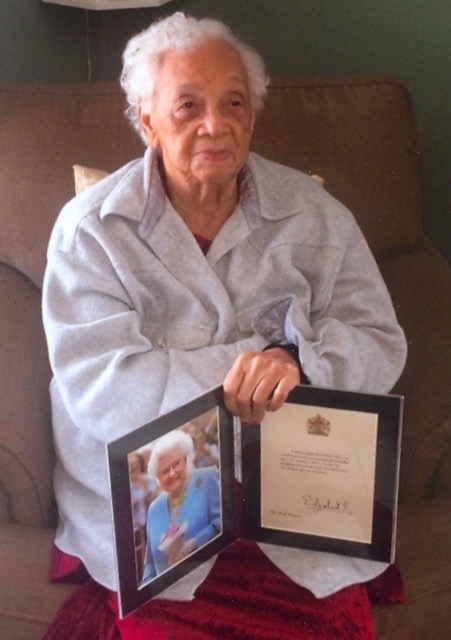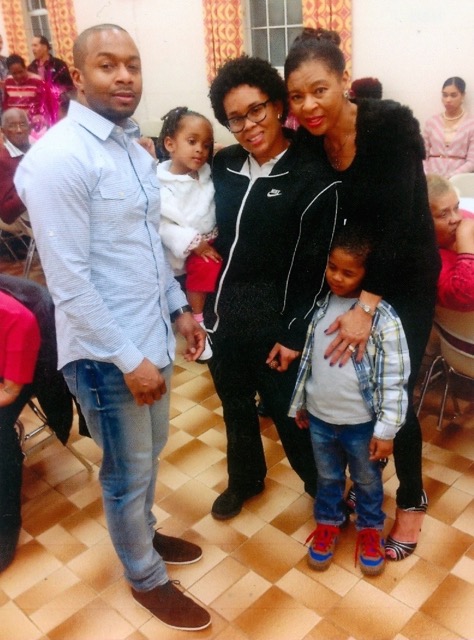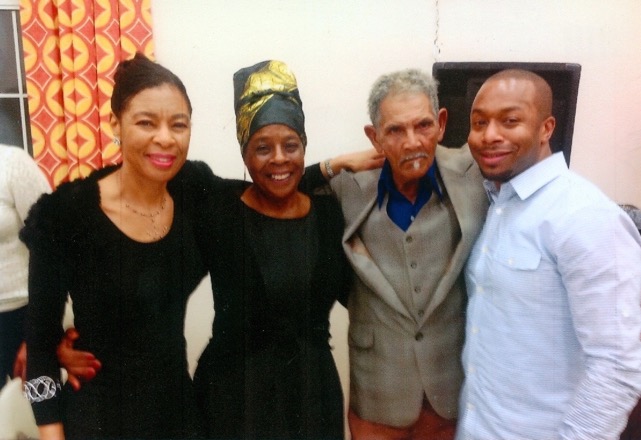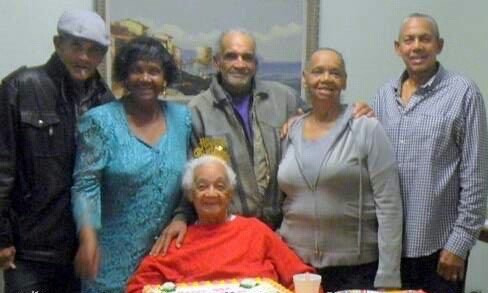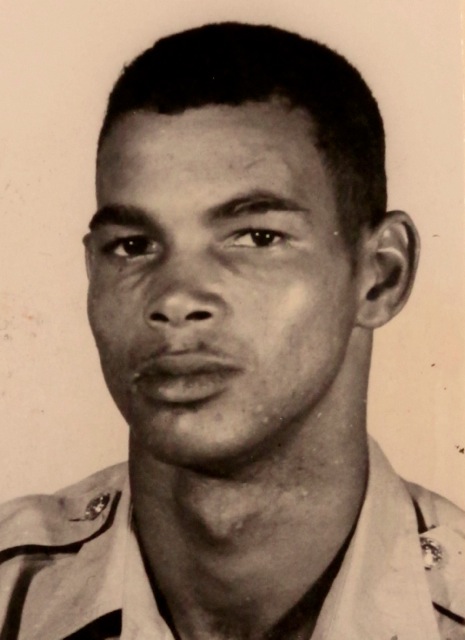
Gilmour Charles Ruthborne "Gil" Simons joined the Bermuda Police Force on 2nd September 1961, along with a number of his fellow Bermudians, including Custerfield "Custy" Crockwell, Reginald Tuckett, Phillip Smith, Eddie “Boxhead” Foggo, Lennet “Lenny” Edward and Glyn Washington.
Gilmour was born in Sandys Parish on 28th July 1936, the son of Arthur Charles Gilmour Simons, a legendary Cup Match cricketer and Ruth Ann Marie Simons (nee Burrows) who recently celebrated her 100th birthday.
Cricket certainly ran in the Simons family. Gilmour’s great grandfather, Austin Thomas Simons, was Captain of Somerset in 1902 when the very first Cup Match was played against St. George’s Cricket Club at the Naval Field in Somerset. Gilmour’s grandfather, Howard Simons also played in that same first Cup Match in 1902 along with his father and he continued to play regularly for Somerset for 10 years. Gilmour’s father followed in the family line to become a formidable cricketer who played in Cup Match throughout the 1930’s and captained Somerset Cricket Club in the annual classic in 1939.
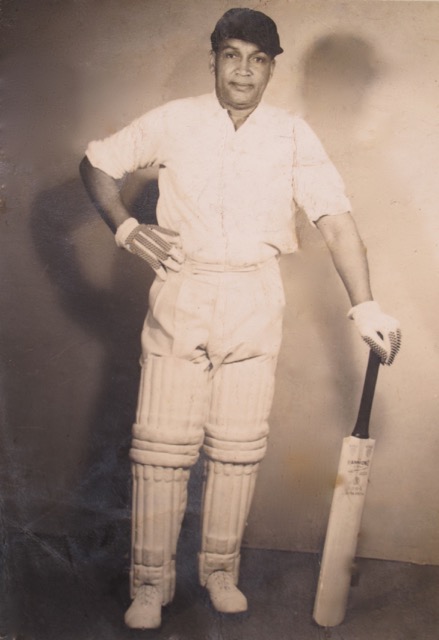
Gilmour’s family had close connections with the Police Force. His father Arthur, a first class mason, served in the Police Force for a few years in the late 1940’s, as did his uncles, O’Brian Simons, Austin Simons, Ambrose Simons and Elwin Phillips, all of whom were also excellent cricketers, and of course, all played for Somerset. The only exception to all these outstanding cricketers in the Simons family appears to be Gilmour!
Arthur and Ruth Simons had six children, 3 boys and 3 girls. Gilmour was the oldest; his two brothers are Coleman and Arthur, and his three sisters are Florence (now deceased), Pamela (Tucker) and Brenda (Warren).
The family moved to Friswells Hill in 1948, and Gilmour attended the Excelsior School in Pembroke, near St. Monica’s Mission where his headmistress was Ms. Dorothy Hughes, and then Central School (now Victor Scott). Gilmo had the opportunity to go abroad when he turned 16. He attended the Dominion Business College in Toronto for 2 years, and then the Harbourited Collegiate, also in Toronto. Gilmore had hoped to become a dentist.
On his return to Bermuda he worked for a while at John F. Burrows Liquor store on Front Street. At about that time his parents and family visited Jamaica where they made some good friends, and in 1957 the family, including Gilmour, moved to Jamaica. Gilmour decided to return to Bermuda in 1959 by himself and he did so at the time of the Theatre Boycott in 1959 which Gilmour describes as an unforgettable experience that had a major positive impact on the lives of all coloured people and the whole of Bermuda.
He decided to join the Bermuda Militia but didn’t enjoy it and in 1961 he decided to apply to join the Bermuda Police Force. Gilmour said he had often talked to his father about the Police and his father supported the idea. He applied and was accepted as a police constable in September 1961.
When Gilmour joined the Police Force in 1961 the Police Training School had not yet been officially established. Officers recruited from overseas were attending 3 month Basic Training Courses at Mill Meese in Staffordshire, UK, but local recruits had traditionally spent a few days in Hamilton Police Station where they were given some very basic notes and access to a set of law books. However, times were changing and the new Commissioner, George Robins, who took office in May 1960, was instrumental in organizing proper training for local recruits.
Gilmour and several fellow recruits attended not one, but two basic training courses.The first was held in 1961 at Prospect, and consisted of 6 weeks training, along with a 2 week driving course and some lifesaving training. Here are members of that first training course some of who had joined the Police Force in early 1960 and attended this first course in late 1961. Sgt Tommy Doyle was one of the instructors.
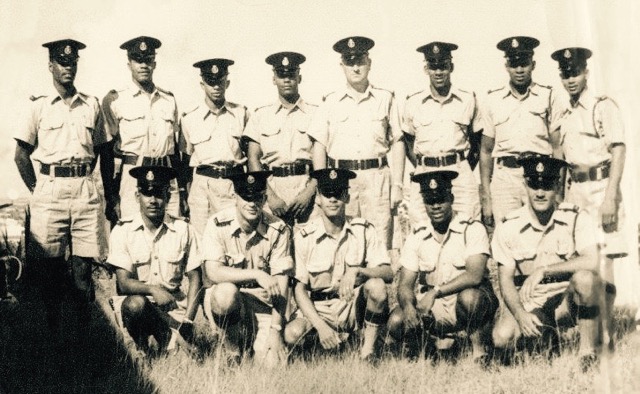
Following the arrival of Chief Inspector Roy Chandler from the U.K., who had been hired by Commissioner Robins specifically to set up a Police Training School along the lines of the British Training Schools, the first 3 month basic training course was organized in the Spring of 1962. Two of these courses were held before Gil and a group of young officers below, some of whom by now had as much as 2 years practical experience, attended Basic Training Course #3.
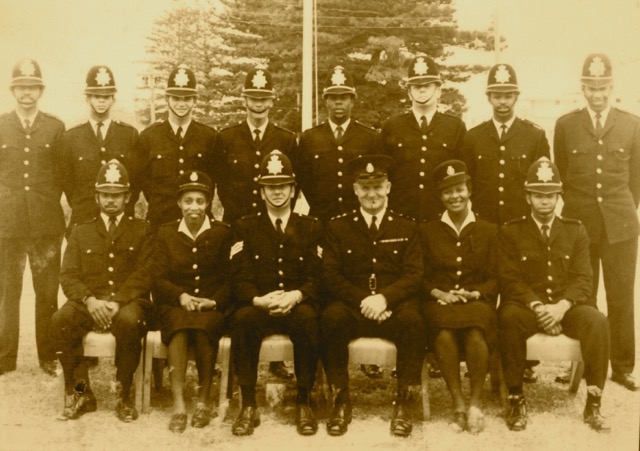
Soon after joining in 1961 Gilmour had been posted to Central Division (Hamilton) when the police station was located on Parliament Street where the Government Administration Building now stands. He recalls making a few arrests, dealing with several prowling cases, and carrying out general police duties including working on Hamilton Docks when the Police were responsible for dock security in the days before shipping containers.
Gilmour says he has never forgotten being on duty at No. 6 shed and listening to his little transistor radio on the evening when the world was shocked by news that President John F. Kennedy had been assassinated.
He also remembers, in June 1964, introducing a new recruit, Roger Sherratt, to the beat in Hamilton, walking through the whole of the City from the Sailors home on Richmond Road to Court Street, Reid Street East, and North Hamilton.
Gilmour was one of the police officers who attended the disturbance outside BELCO on the morning of 2nd February 1965, where the BIU were picketing the entrance to the BELCO Plant.
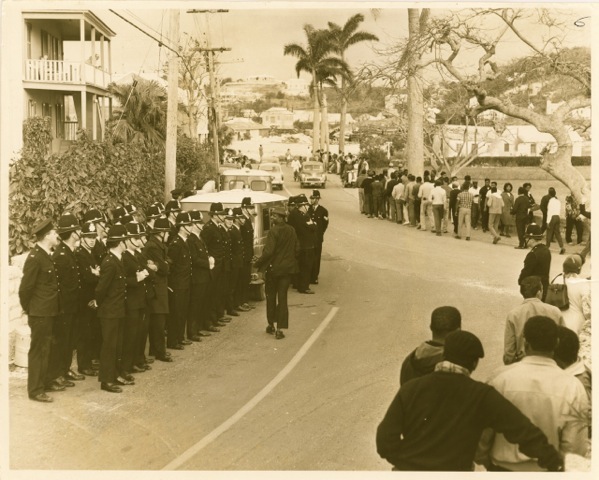
He remembers bring driven along Ferrar’s Lane in a van along with Sergeants John Cafferky and Ken Morris, and maybe Mike Caulkett. The van was driven near to the western gate where picketing was going on. Gilmour says, “ Sgt Cafferky and Sgt Morris led us out of the van to see what was going on. We walked from the west gate to the main gate, and behind a wall we saw a stack of illegal weapons, reinforcing rods, some with barbed wire wrapped around them, and golf clubs.”
Ken Morris, and Kenny Paul, one of the picketers, were very good buddies who played cricket together. Gilmour remembers these two were talking to each other and he didn’t see Kenny Paul again until he saw him on top of P.C. Ian Davies with some other rioters.

In Gilmore’s own words, “They were maliciously attacking Ian Davis and he was trying to fight them off. I never saw him with his truncheon out (that would be all that he had to protect himself, and that was all we were carrying that morning) but I saw a group of men with weapons brutalizing Ian and they almost killed him. What they were doing was inhuman. "
“When they saw that I was watching and they knew that I knew who they were, I remember one particular person that I will never forget seeing there that morning who later became a well known politician. I can even remember what he was wearing – khaki pants, sneakers and a white “T” shirt. He spoke to me and shouted “You ................. We’re going to kill you today.”* This was after they had brutally attacked Ian Davies, and Kenny Paul was with him. No other policemen were right there when he threatened me, and at that point I took out my truncheon to defend myself and struck a couple of them as they tried to attack me.
* Editors note - Gilmour related the exact words that he says were used by the rioter who told him he was going to be killed that day, but they are not being published due to the extremely profane language used.
I then turned and saw another man who I knew, who was mixed up with the rioters. He was the person who threw a piece of reinforcing rod at me and it just missed me, but I was able to catch it. I put my stick back in my pocket and began swinging the reinforcing rod around as the group of rioters tried to surround me. I know I struck a few of them. Another rioter was a bus driver who was very big and strong who approached me in a threatening manner and said, “Give me that goddamned piece of pipe.” I struck him around his mid section knocking him down, and I put my foot on his chest, screaming, while the others were still trying to get to me.
At that point Dr. Barbara Ball came over to me. I hadn’t seen her there when Ian Davies got attacked. I told her not to approach me. After that the rioters stopped trying to attack me and I went back to the van and threw the weapon in it. The van was still parked near the western gate. P.C. George Linnen and several more police officers were there, and at that point I realized I was bleeding. I’d been struck by one of the broken bottles that had been thrown at me.
The riot squad eventually arrived and the rioters quickly dispersed. The riot squad did not arrive until way after Ian Davies had been brutalized and the rioters had attacked us with their weapons.
After that we all went to hospital for treatment and I had stitches in my foot. Other than that I was okay but very shaken up. Quite a few policemen were admitted to the hospital for treatment to their injuries.
I later gave evidence against several of the rioters in Supreme Court, and Kenny Paul was imprisoned for 9 months for his attack on Ian Davies. I could never quite believe that the man I knew as Kenny Paul could have been so vicious.
February 2nd 1965 was definitely an unforgettable experience, and one where we, the Police, were just trying to do our duty and keep the peace.”
During an interview Gil explained, "After the BELCO riot I was getting threats about my role as a policeman in the riot, and I felt it could be detrimental to my children and their welfare because there was also threats against my children."
I resigned from the Police Force in October 1965 and worked for 2 or 3 years as a Prison Officer. I then worked for Charles Mayne at Ideal Furniture, collecting monies owed to him. He treated me very well. I also tried construction for a while, but one day I was walking along Happy Valley Road when I was stopped by Paul Field who I knew from when we both worked in the Police Force. Paul asked me to jump in his car and on the spot he offered me a job working for him and Bill Black at Safeguard Security which they had set up after leaving the Force.
Paul said he would take me part-time to get a foot in the door, and after a little while I started full-time and worked there for about 23 years. I’m now retired and living in one of the apartments on Alexandra Road that used to be police housing and located just a few yards from the Police Headquarters."
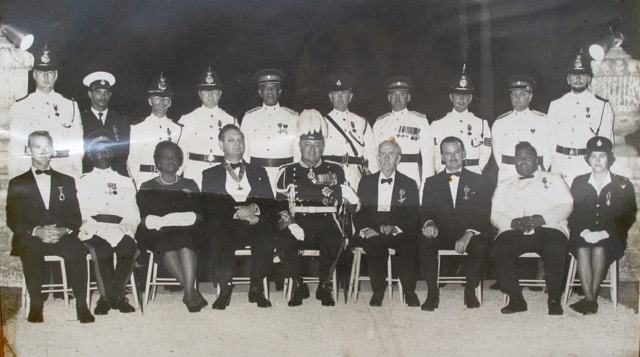
"One of my proudest moments was going to Government House in January 1966 to receive the Colonial Police Medal for Meritorious Service from H.E. Governor Lord Martonmere. Amongst those also honoured at that ceremony were Ian Davis, Andy Bermingham, Inspector Robert Ball, Sergeants John Cafferky and Ken Morris, Mike Caulkett and W.P.C. Christine Muspratt."
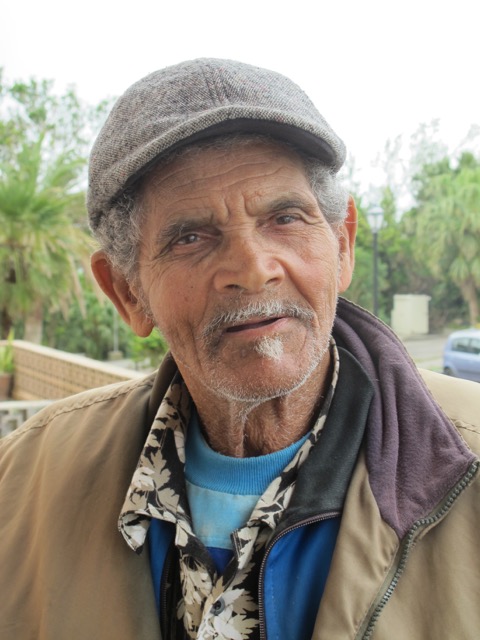
"It seems a long time ago but I look back on my time in the Police Force with a lot of good memories. I got on with all of the guys I worked with, and I was very close with Ian Davies who always treated me with the utmost respect. He was a true gentleman."
Gilmour had married Iris Linda Marie (Gumbs) in 1962, and they had two girls, Pamela Marie and Paula Lee Ann. Pamela Marie Gray now lives in the US with her son Justin, and Paula Lee Ann lives here in Bermuda and has two children Raisa (25) and Nisa (24).
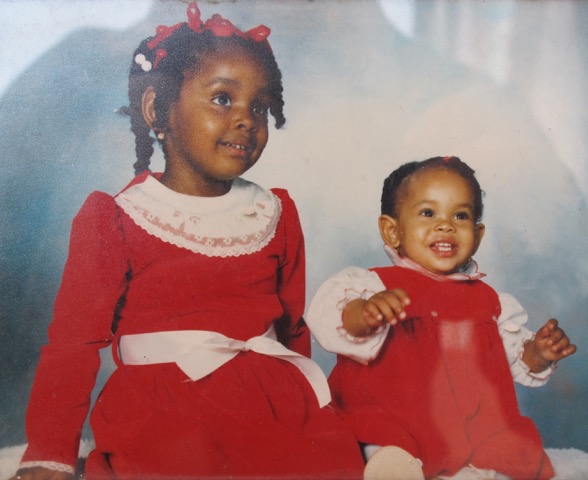
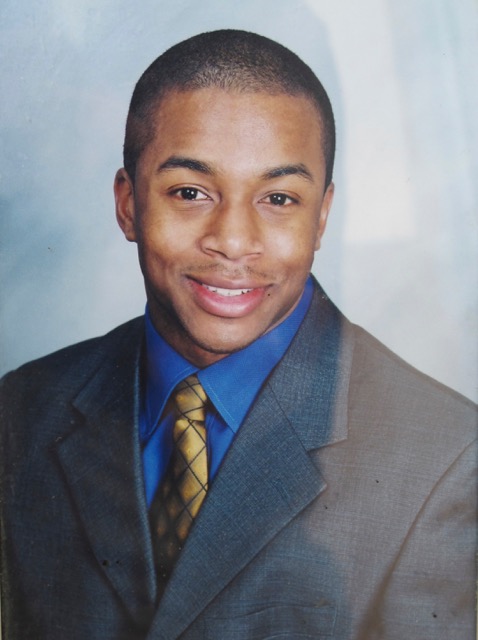
Gilmour is now a great grandfather. His granddaughter, Raisa Simons-Smith, a Customs Officer, has a son, Nasri, and a daughter, Kalayah Leighann Robin. Nisa who is employed at the Phoenix Store also has two children, her son Nijasz, and her daughter Jayari.
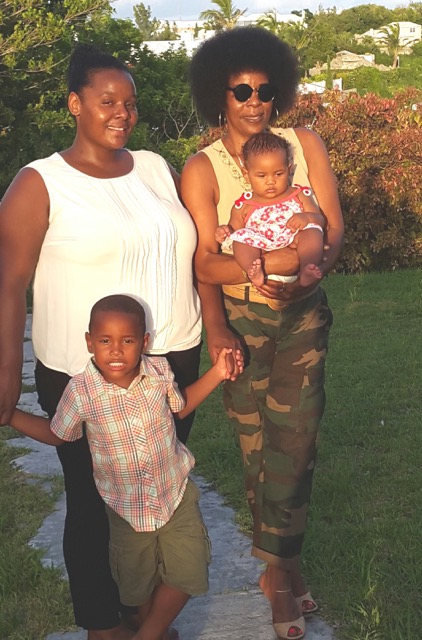
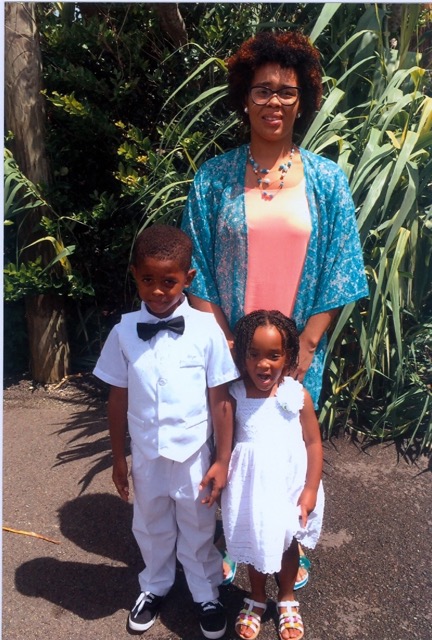
The Matriarch of the Simons family is undoubtedly Gilmour's mother, Ruth, who celebrated her 100th birthday in January 2015 at which she received a congratulatory letter from Her Majesty Queen Elizabeth CLICK HERE for article in Bernews taken at Mrs Simons centenary birthday party.
